Our four smallest shelters compared
Posted by on 31st Jan 2017
Here at Seek Outside one of our most frequent customer questions is "which of the four smaller shelters should I get if I'm going to use it for backpacking?" It's a tough thing to answer, especially if you have no way of seeing at least one of the options in person, and most especially if you've never slept in another floorless pyramid or tipi which might provide a means for comparison. The following photos, table, and suggestions for best use will hopefully help those of you pondering a shelter for upcoming adventures.
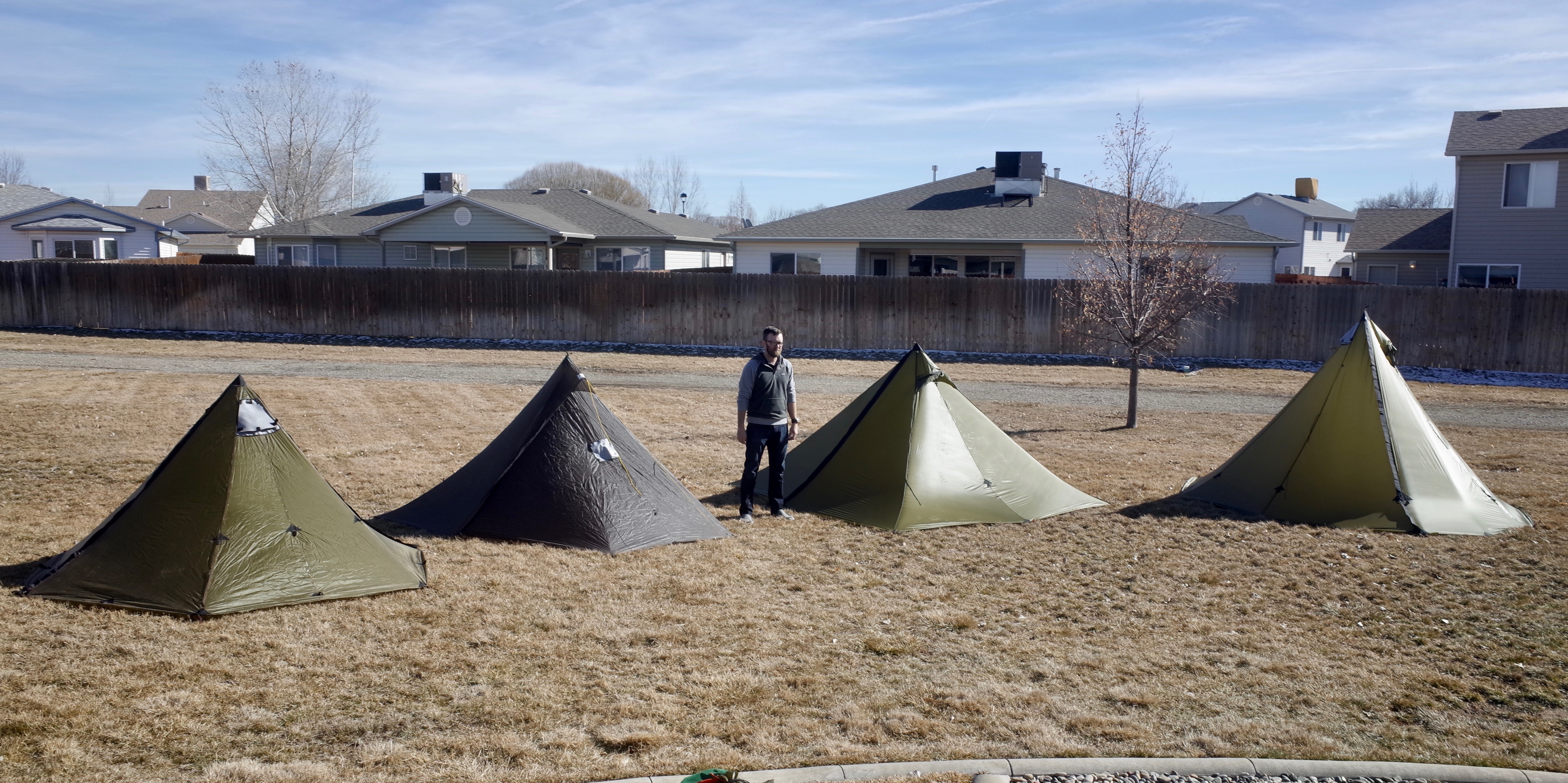
Pictured above, left to right, are the Silvertip, Little Bug Out with 3 piece vestibule, Cimarron, and 4 person tipi. Note that I'm 5'11", and that the LBO is an older model in a color not currently available.
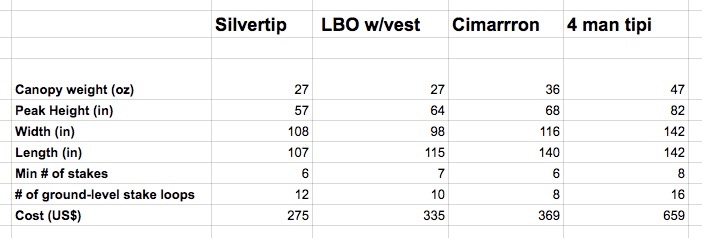
These weights do not include stakes or the center pole, and for all shelters save the 4 person do not include a stove jack, either. Height, width, and length are all measured with the shelter pitched to the ground, as shown here.
The differences in the shelters appear subtle at first glance, and while any of these four will do well at most human-powered backcountry applications, there are distinct uses for which each of the four are best suited.
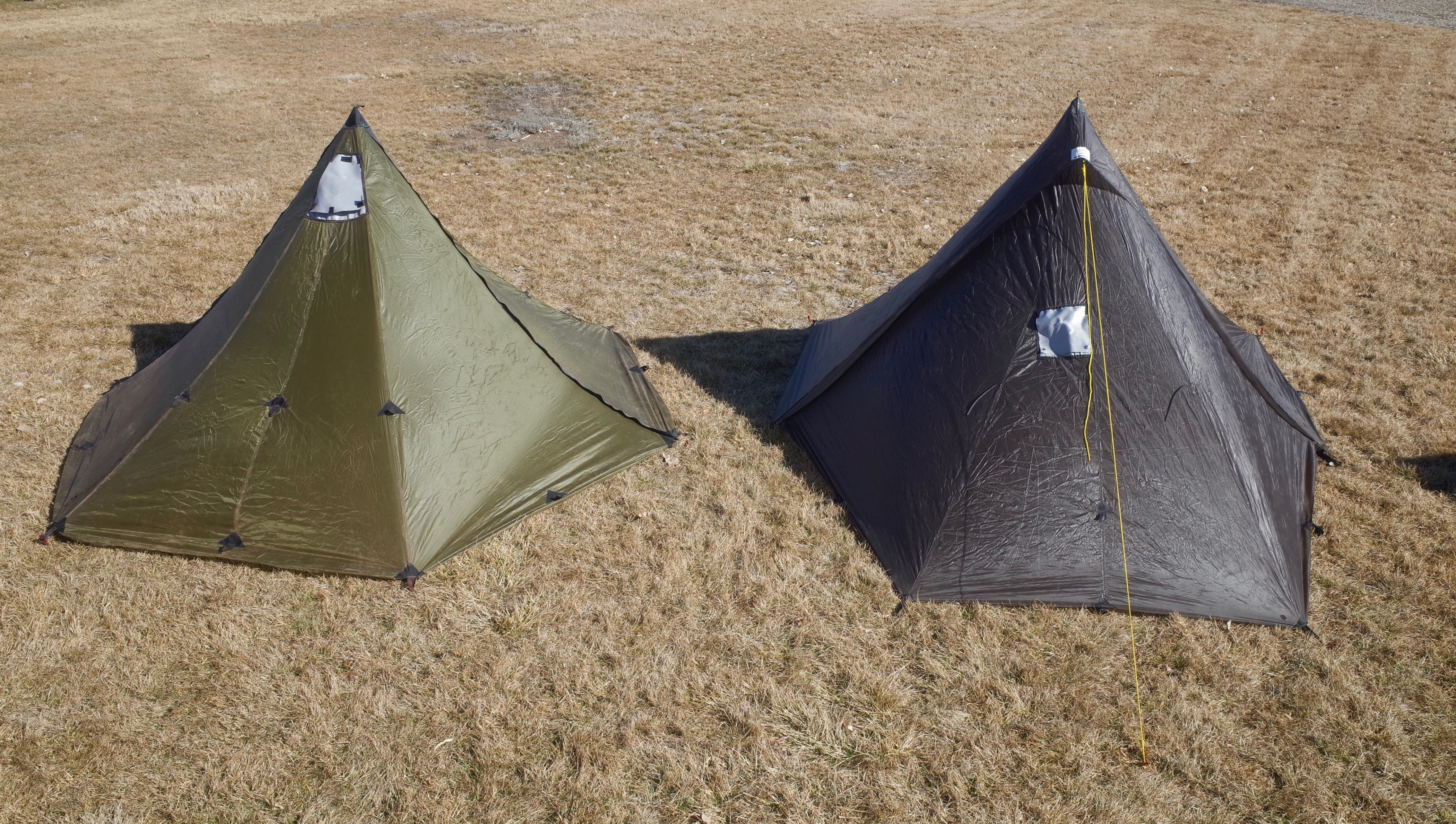
Aside from the obvious differences in size, one way to start distinguishing which shelter might be best for you is to look at the number of ground-level stake points. With floorless shelters, stake points equal weather resistance. The LBO, with 10 total, cannot quite keep up with the Silvertip, which has 12 stake points along a slightly shorter circumference. The Cimarron, with half the stake points of the 4 person, will in the end be less weather resistant. It is worth noting that the Cimarron and LBO are no slouches in either wind or snow, but if truly severe weather will be a regular feature, the Silvertip or 4 person might be a better choice.
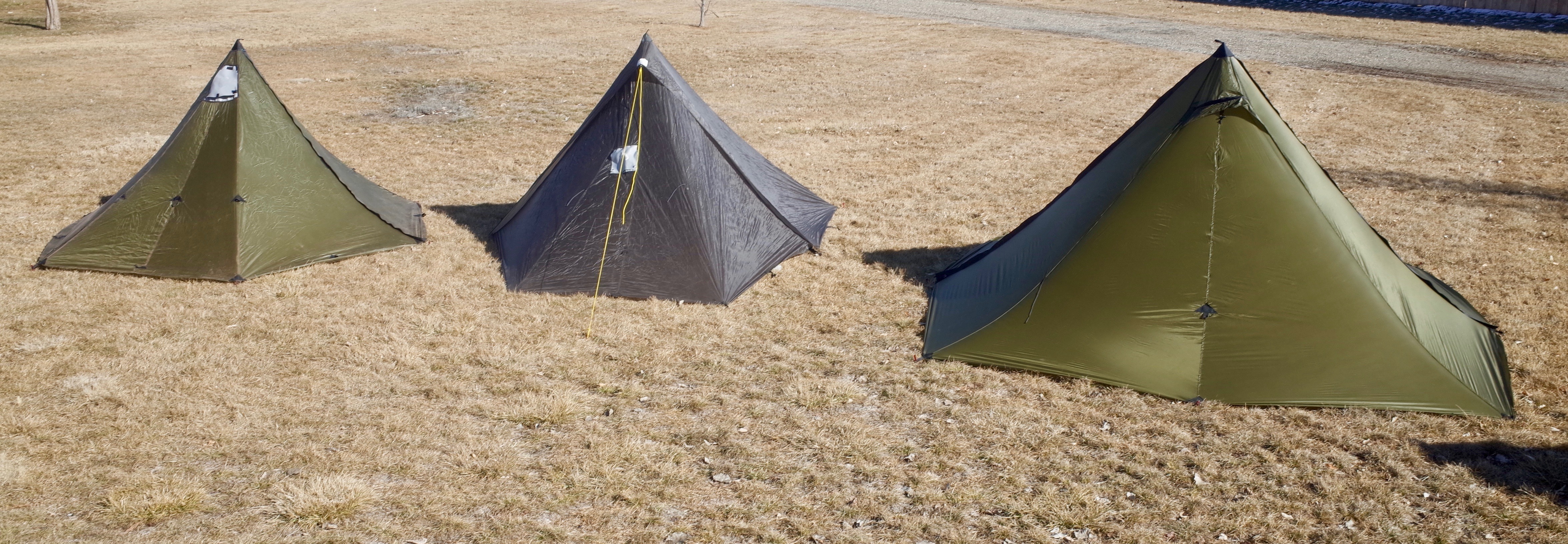
Another way of making a decision is to think about whether a stove will be used, how often, and with how many people. One person and a stove in the Silvertip is tight, though the lack of space can be an asset in cold weather. Two with a stove in the Silvertip does not really work, two with a stove in the LBO is doable, while two with a stove in the Cimarron and especially the 4 person is luxurious.
Yet another way to think about your decision is head room. At 6'10" tall the 4 person has just enough space for someone my height to stand up next to the pole. It isn't walk around space, but it does make the tipi feel more liveable in prolonged stretches of bad weather, or just during long winter nights inside. Practically speaking no adult is going to stand up in the Cimarron, but it does have plenty of head space for taller folks to sit and kneel and put on clothing without hitting head or arms on the occasionally wet side of the tent. The LBO and Silvertip are respectively smaller, and most people without quite a few nights in a backpacking tent find the Silvertip claustrophobic.
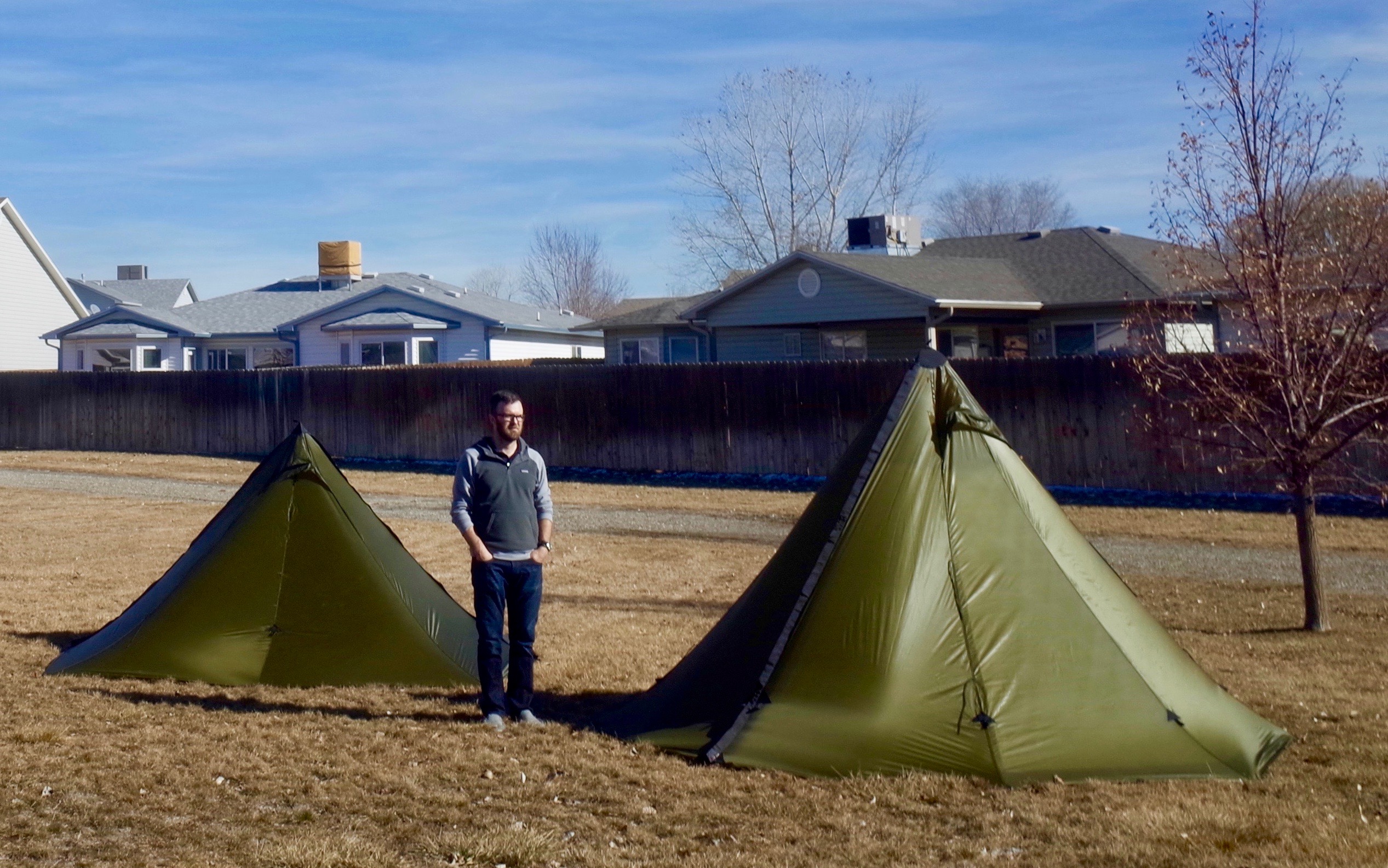
A final way of facilitating your decision is to think about accessories. All four shelters can be fitted with a stove jack, but the Silvertip is the only one not available with a nest. Therefore a solo backpacker going into heavy mosquito country who might find the Silvertip interesting, but could be better served by the LBO, with the cougar nest. Similarly, the 4 person tipi is the only one of these for whom we make liners, making it a more attractive option than the Cimarron for users who regularly find themselves troubled by condensation and deep cold. Lastly, the LBO's ability to be expanded via the tarp connector and extra base, or to be run with the base only in good weather, makes it the most versatile option long term.
In summary:
The Silvertip is a small, exceptionally wind resistant shelter best for two backpackers for whom weight is a major priority, or for one hiker who wants weatherproofing above all else. People who move camp daily and often camp above treeline are the target audience for the Silvertip.
The LBO is good for two hikers in most circumstances, especially for couples who can sleep close together in a Cougar nest behind the pole. It is also the simplest, and least expensive, option for someone who wants both a smaller and larger shelter down the road.
The Cimarron is the most versatile shelter in the Seek Outside line, when weight is a priority. Both the smaller Cougar and larger Cimarron nest are options, as is sleeping two with a stove and gear, or up to four in a squeeze. If you're not quite sure what you might do with your tipi in the future the Cimarron preserves the most options.
The 4 person tipi is quite a bit heavier, and more expensive, than the Cimarron but the gains in head room, the ability to use a liner, and the added weatherproofing make it an attractive option for people traveling in winter, bad weather, or staying in one place for multiple nights.
…